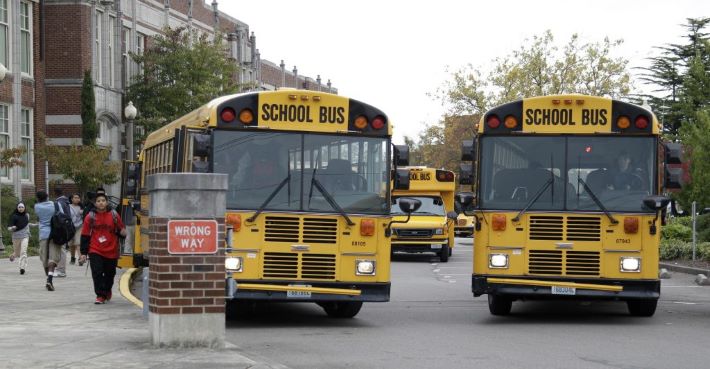WASHINGTON – Dawn Prescott doesn’t recall all the details of when the school bus she was riding on more than 15 years ago careened off a bridge in Omaha, Nebraska, plunged nearly 50 feet into a creek bed, and landed on its side.
She was a chaperone for the high school band, which was returning from a competition in October 2001. Her son Benjamin, 14, was sitting a few rows up, behind the driver.
“I remember that I grabbed the luggage rack and was hanging from it,” Prescott, 55, recalled. “Kids were screaming and hurt and in tangled heaps that I stepped over. All I could think of was that I had to get to my son. But when I finally did, I found he was unconscious.”
Benjamin, along with two other students and a parent, died as a result of the crash. Twenty-six passengers were injured. So was the driver, the only one on the bus who was wearing a seat belt. Seat belts weren’t required on school buses, and the bus didn’t have any for passengers.
Since then, Prescott, a middle school teacher, has been urging Nebraska lawmakers to require what she says are lifesaving seat belts on new school buses. So far, they haven’t.
But they’re considering a seat belt bill again this year, and similar legislation has been introduced in at least 19 other states, according to the National Conference of State Legislatures (NCSL). That’s far more states than usual – a change some safety experts attribute to a federal recommendation in late 2015 that school buses have seat belts.
So far, none of the bills – many of which would require that new school buses purchased after a certain date be equipped with seat belts – have been passed. And if history is any indication, many of them will fail amid questions about the seat belts’ effectiveness in preventing death and injury, and whether they are worth the cost to financially strapped school districts.
Nationwide, only six school-age passengers die in bus crashes each year, according to the National Highway Traffic Safety Administration (NHTSA).
For seat belt advocates, there’s little question what states should do. “Kids have to be on these buses, and I think we have to do everything we can to protect them,” said Connecticut state Rep. Fred Camillo, a Republican who is sponsoring a bill that would require seat belts on new buses from model year 2022 on.
Others aren’t so sure. They point to the good safety records, question whether children can quickly unbuckle and evacuate buses in some emergencies, and balk at the estimated $7,000 to $10,000 cost of adding seat belts to a new school bus already priced at $80,000 to $120,000. Retrofitting buses already on the road would cost even more.
“Nobody cares more about kids’ lives than I do. That’s my job,” said Rich Casey, transportation director for Bellevue Public Schools in Nebraska. “If I really believed school buses were unsafe with their current configuration, I would be 100 percent behind putting seat belts on school buses. But there is no scientific or empirical data that shows they would offer more protection than the current system.”
Only six states – California, Florida, Louisiana, New Jersey, New York and Texas – have laws requiring seat belts on school buses. In Louisiana and Texas, however, the requirements are contingent upon funds being appropriated by the state, and that hasn’t happened.
Safety experts agree that school buses are the safest way to transport students. Every day, about 485,000 buses carry more than 25 million children to and from school and related activities in the U.S., according to the National Association for Pupil Transportation, which represents school transportation directors.


